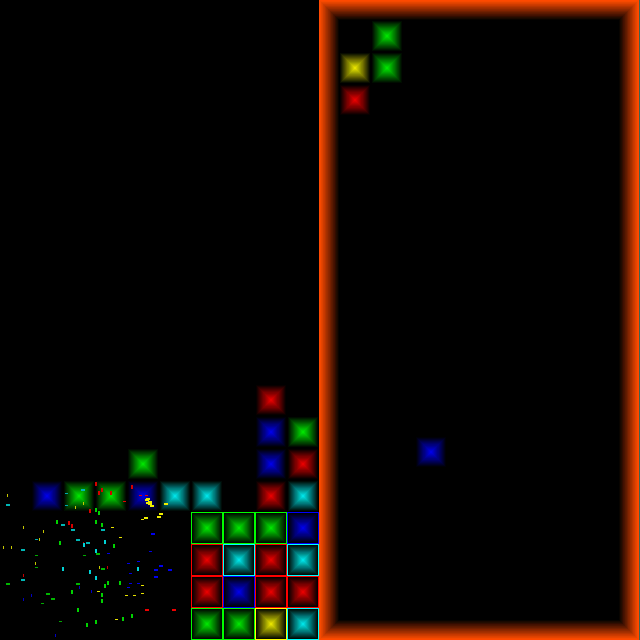Nextris
| Genre | Description | Technologies | Development Status |
|---|---|---|---|
| Puzzle, Procedural | A Tetris clone with a twist | C++, SDL, PortAudio | ongoing |
Now available in HTML5 via experimental Emscripten compile: here
I started Nextris because I realized and found it appalling that I hadn’t coded a Tetris clone. Everyone has coded a Tetris clone! Why is mine special, you ask? Well, seeing as it’s a clone, that’s an odd question; but come to think of it, wouldn’t it be fun to play in a style that allows both classic line clearing as well as by grouping similar colors? Yes. It would. To keep things interesting, I’m enforcing a restriction that the game ships as a single executable, i.e. no content allowed. This means drawing rectangles for all the graphics and playing procedurally generated music–both runtime synthesis and algorithmic composition (if you can call it that).
It’s a lot of fun. This little game has gradually turned into a testbed of sorts for playing with various procedural features. Lots of them suck, but the cooler ones tend to stick around and get released. The music is my favorite bit thus far. I use PortAudio to play some beeps and boops, generating a nice, relaxing melody without any premade music resources! Okay, fine, I hardcoded the chords, so shoot me =P I’m incredibly satisfied with how this turned out–give it a shot!

Controls
By default, movement uses WASD and rotation uses the L and P keys (this was developed on a laptop, can you tell?). You can change this by hitting Return/Enter during play and following the instructions in the console, or alternatively editing keyconfig.txt and substituting the appropriate ASCII values (ouch). This was as close as I could come to user-configured controls without bending my no-content restriction.

